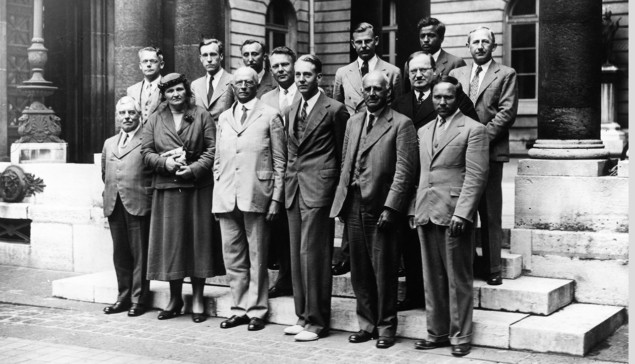Tushna Commissariat reviews What Stars Are Made Of: the Life of Cecilia Payne-Gaposchkin by Donovan Moore

“I have reached a height that I should never, in my wildest dreams, have predicted 50 years ago. It has been a case of survival, not of the fittest, but of the most doggedly persistent,” remarked Cecilia Payne-Gaposchkin, before her death in 1979. The trailblazing astronomer had many firsts to her name – she discovered that stars are mainly made up of hydrogen and helium.
In 1925 she became the first person to earn a PhD in astronomy from Radcliffe College at Harvard University; and she was also the first woman to become a professor at Harvard and then to head its astronomy department. But despite her many achievements, she was frequently overlooked, with her work not receiving the attention it warranted during her time; and her significant contributions often omitted from the annals of scientific history.

Cecilia Payne-Gaposchkin: the woman who found hydrogen in the stars
Which is why it was delightful to see the first full biography outlining her life, work and trials, in What Stars Are Made Of: the Life of Cecilia Payne-Gaposchkin by US author and journalist Donovan Moore. Extremely well-researched, detailed and engaging, with a perfect mix of history, anecdotes and scientific explanations, Moore brings to life the bright light that was Payne-Gaposchkin.
Born in Wendover, England, in 1900, she was a curious child who already bore the makings of a scientist. It’s interesting to note that Payne-Gaposchkin had a number of influential women in her early life who moulded her views and acted as the mentors and role models that would shape her career – from her mother, to her school teachers to her botany professor Agnes Arber at Cambridge. It was perhaps the support and encouragement that she received during these early years that helped her face the many hurdles in her later life, especially when it came to the extreme bias she faced as a woman.
Despite winning a scholarship to study botany, physics and chemistry at Newnham College, University of Cambridge, she was not awarded a degree, as she was a woman. Payne-Gaposchkin realized that her only option to make a career as an astronomer was to leave the UK for the US. She moved to Harvard College Observatory in 1923, to join a graduate programme in astronomy, where her 1925 thesis was famously described by astronomer Otto Struve as “the most brilliant PhD thesis ever written in astronomy”.
The universe through a glass darkly
Her research, that looked into the abundance of chemical elements from stellar spectra, would begin a revolution in astrophysics – but she would have to fight hard for her work to be trusted (she was told by Henry Russell, director of the Princeton Observatory, that her findings were incorrect, only for Russell to later take credit for the very same research).
Despite ultimately achieving great success in her academic career, What Stars Are Made Of highlights the incredible struggles that Payne-Gaposchkin faced at each and every step – battles that she had to fight mostly single-handed. While her story is inspiring and encouraging, I can only hope that bright young women today do not have the same mountains to climb, as they reach for the stars.
- 2020 Harvard University Press 320pp £26.95hb



